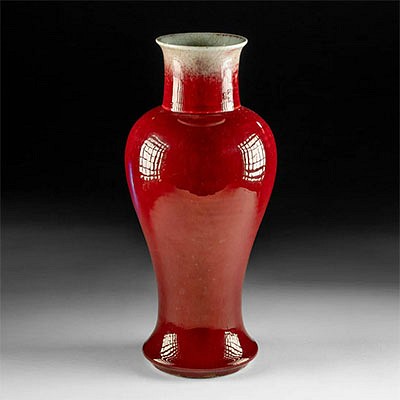Rare Papua New Guinea Marind Wood & Seed Dancer Regalia
Lot 303
About Seller
Artemis Fine Arts
686 S Taylor Ave, Ste 106
Louisville, CO 80027
United States
Selling antiquities, ancient and ethnographic art online since 1993, Artemis Gallery specializes in Classical Antiquities (Egyptian, Greek, Roman, Near Eastern), Asian, Pre-Columbian, African / Tribal / Oceanographic art. Our extensive inventory includes pottery, stone, metal, wood, glass and textil...Read more
Estimate:
$1,600 - $2,400
Absentee vs Live bid
Two ways to bid:
- Leave a max absentee bid and the platform will bid on your behalf up to your maximum bid during the live auction.
- Bid live during the auction and your bids will be submitted real-time to the auctioneer.
Bid Increments
| Price | Bid Increment |
|---|---|
| $0 | $25 |
| $300 | $50 |
| $1,000 | $100 |
| $2,000 | $250 |
| $5,000 | $500 |
| $10,000 | $1,000 |
| $20,000 | $2,500 |
| $50,000 | $5,000 |
| $100,000 | $10,000 |
| $200,000 | $20,000 |
About Auction
By Artemis Fine Arts
May 11, 2023
Set Reminder
2023-05-11 10:00:00
2023-05-11 10:00:00
America/New_York
Bidsquare
Bidsquare : Fine Antiquities, Asian, Pre-Columbian, Ethnographic Art
https://www.bidsquare.com/auctions/artemis-gallery/fine-antiquities-asian-pre-columbian-ethnographic-art-12771
Classical antiquities, ancient and ethnographic art from cultures encompassing the globe. Artemis Fine Arts info@artemisgallery.com
Classical antiquities, ancient and ethnographic art from cultures encompassing the globe. Artemis Fine Arts info@artemisgallery.com
- Lot Description
**Originally Listed At $1000**
Oceania, Papua New Guinea, Marind / Marind-Anim people, ca. early to mid-20th century CE. A rare example of a wood and seed covered body panel from a dance costume used during dema rituals. The open work panel face is entirely covered with red abrus and white job’s tears seeds that are affixed with resin, and white stork feathers tied to the top. Rituals were carried out with dramatic costumes and drums, reenacting cosmological stories about "demas," primeval beings (plants, animals, people). Dema costumes had attributes to identify the being – the feathers on this panel represented a stork, and demas would also act as totems for different clans – some of which included coconut, wallaby, sago, and betel nut, and crocodile. The stork (Ndik-end) clan dancers wore an abstract bird shaped panel on their heads with a protruding wooden neck and beak. This panel would have been suspended on the chest of the dancer. Size: 11" L x 0.5" W x 26" H (27.9 cm x 1.3 cm x 66 cm); 29" H (73.7 cm) on included custom stand.
Reenacting stories of creation encouraged fertility among the men and women of the tribe. The Marind culture and population was drastically affected by Dutch colonization, and many traditions were considered taboo and outlawed, such as headhunting and ritualistic intercourse.
Provenance: private Hawaii collection, acquired 2000 to 2010
All items legal to buy/sell under U.S. Statute covering cultural patrimony Code 2600, CHAPTER 14, and are guaranteed to be as described or your money back.
A Certificate of Authenticity will accompany all winning bids.
We ship worldwide and handle all shipping in-house for your convenience.
#177503Repaired, central panel scrolls reattached with adhesive, and central vertical band also repaired across horizontal break line. Some losses to seeds throughout and fraying to feathers and some discoloration. Earthen and mineral deposits throughout. Seeds flaking off if handled. Overall good condition. Please note the abrus seeds are highly toxic if consumed, we recommend displaying in a case.Condition
- Shipping Info
-
All shipping is handled in-house for your convenience. Your invoice from Artemis Gallery will include shipping calculation instructions. If in doubt, please inquire BEFORE bidding for estimated shipping costs for individual items. In most cases Artemis Gallery cannot ship to Australia and Germany, please inquire before bidding.
-
- Buyer's Premium



 EUR
EUR CAD
CAD AUD
AUD GBP
GBP MXN
MXN HKD
HKD CNY
CNY MYR
MYR SEK
SEK SGD
SGD CHF
CHF THB
THB















